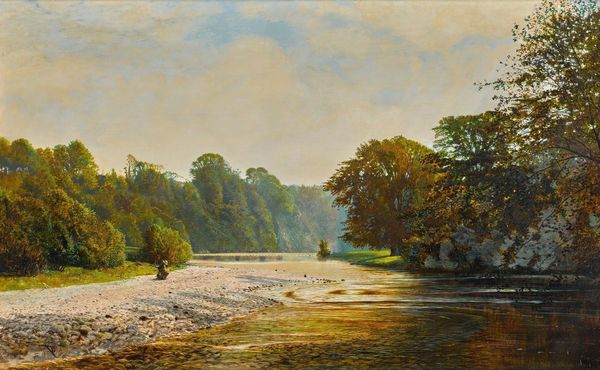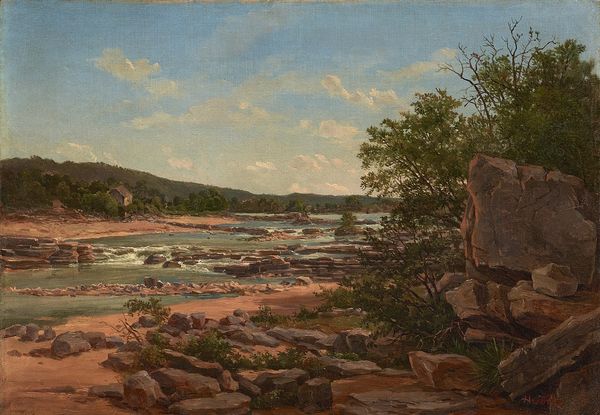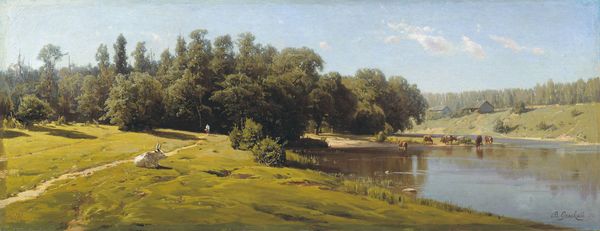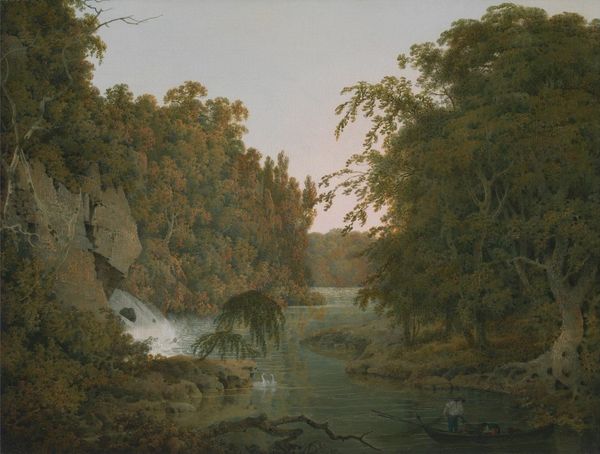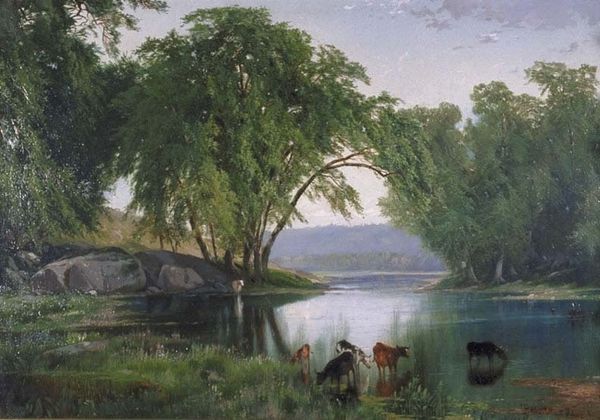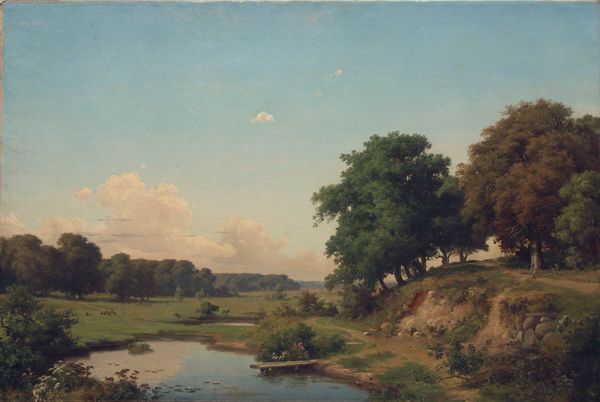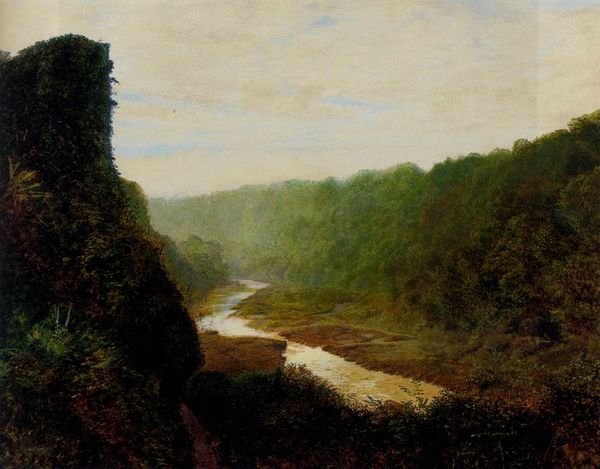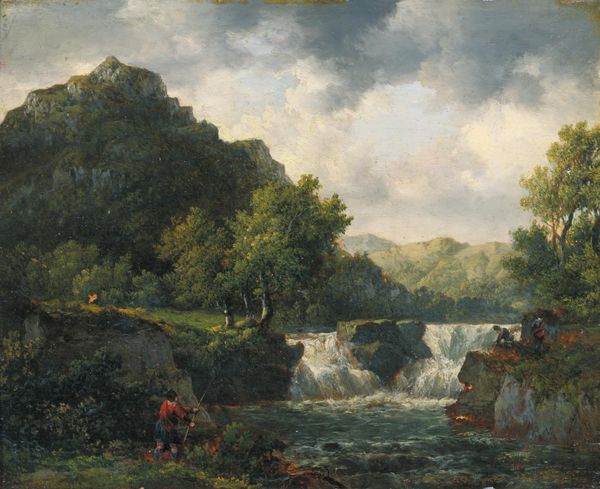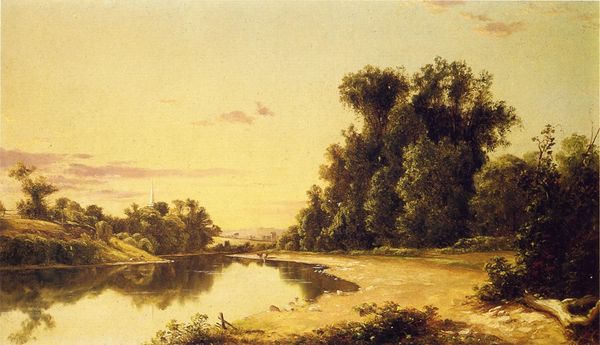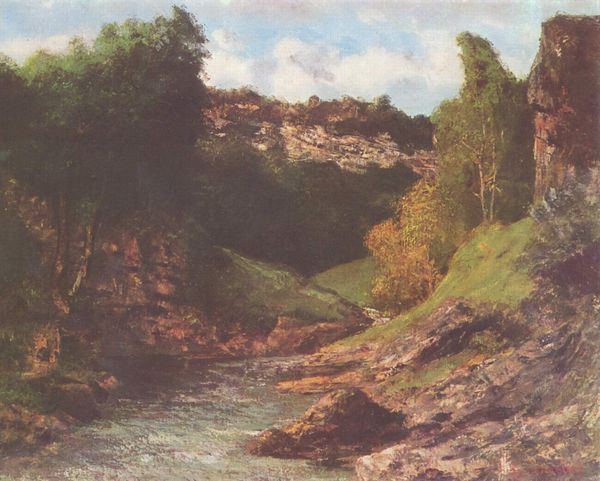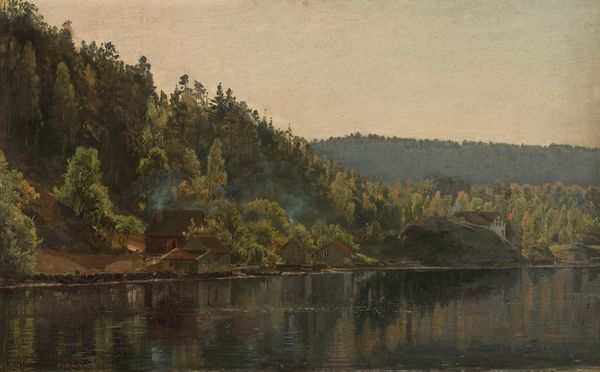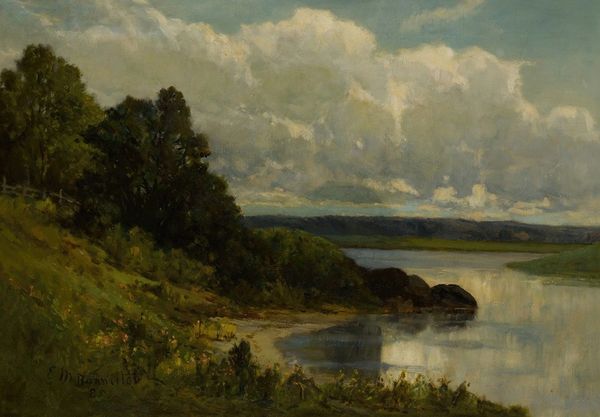
Dimensions: 12 7/16 x 20 15/16 in. (31.59 x 53.18 cm) (sight)
Copyright: No Copyright - United States
Curator: What a lovely moment of serenity, wouldn’t you agree? This oil-on-canvas landscape painting, simply titled “Landscape,” was completed in 1890 by Alexis Jean Fournier. It now resides here at the Minneapolis Institute of Art. Editor: It certainly has a calming effect at first glance. I notice how the eye is led gently across the water, but the composition also feels...static, almost staged. The forest looms a little too perfectly in the background. Curator: That sense of a staged serenity connects, for me, to the work of a romantic ideal, a kind of constructed view of nature prevalent at the time. One of picturesque beauty but sanitized for public consumption. The absence of industry, the solitary house hinting at self-sufficiency—it’s all part of a deliberate visual language. Editor: I agree. This image almost avoids acknowledging any difficult context about life or the state of society at that time. As Fournier worked *en plein air,* what was the role and access that marginalized groups of people had to these scenes he portrayed? Curator: A critical question indeed. Fournier belonged to a generation of American artists engaging with Impressionism. While painting outdoors allowed for capturing fleeting moments of light, the subjects they chose, and perhaps more importantly, those they didn't, reflect specific societal values and privileges. These idealized landscapes become spaces coded for certain groups. Editor: Yes, precisely! When thinking of Impressionism, and maybe I’m digressing here, but, that artistic focus was enabled through innovations such as the mass production and distribution of premixed paints in tubes…what I mean is that we have to reflect on that, in turn impacting artistic practices and therefore these "landscape" genre images like this one. We must think of that access to technology that impacts artwork creation. Curator: A wonderful point! We mustn't forget how intertwined artistic creation and broader industrial developments have always been, deeply affecting what can be portrayed. The availability of paint and modes of travel made art more portable. Editor: Ultimately, even an image intended as pastoral needs to be viewed with critical awareness toward what narrative is included. The composition and materials—nothing occurs in a vacuum. The landscape serves not only a snapshot, but as social document. Curator: Yes, the scene is calm and invites reflection, yet you and I know these moments, and works, often are the result of societal conventions. We should both carry on reminding our audiences to reflect.
Comments
No comments
Be the first to comment and join the conversation on the ultimate creative platform.
